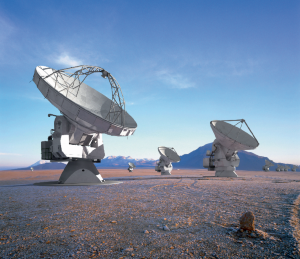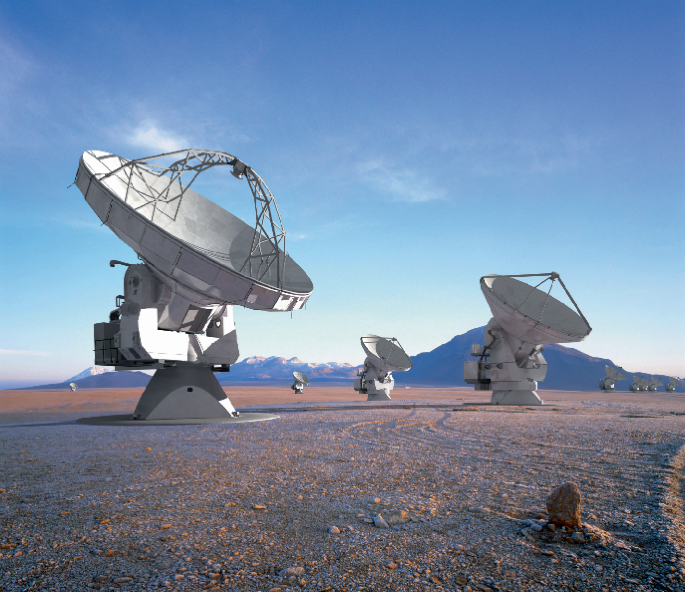It’s never too early to plan for a regular dose of physics during your vacation. If you are looking for inspiration, we have some hidden physics gems for you.
You can take the scientist out of their research environment, but you cannot take the passion for research out of the scientist. Whether you are gearing up for your next vacation or are still in the planning phase, chances are your destination — even a remote one — might offer a variety of exciting science- or physics-related activities.

Credit: Science History Images / Alamy Stock Photo
Science museums are an obvious choice and can give you a welcome break from the summer heat or winter cold — some even offer you the chance to experiment and engage potential travel companions of all ages. Whereas most well-known museums tend to be conveniently located in larger cities, such as the Nobel Prize Museum in Stockholm, Sweden, the Tycho Brahe Museum and his former observatory, for example, are located on the small Swedish island of Ven.
Even some universities can be tourist destinations: you can visit the nationality rooms designed by local communities in the University of Pittsburgh’s Cathedral of Learning, a 42-story tall skyscraper, in the US or take tours around the University of Oxford in the UK.
Arguably most cities have at least one landmark with a connection to science, such as the Cheomseongdae Observatory in Gyeongju, South Korea, which is believed to be the oldest surviving astronomical observatory in Asia. Other common sights include the homes of famous scientists or their burial places — think of Marie Curie’s lead-shielded tomb in the crypt of the Panthéon in Paris, France, or Ludwig Boltzmann’s grave in the Vienna Central Cemetery, Austria. But there are surely more sights to discover.
A widespread notion is that state-of-the-art research facilities or institutions provide visit opportunities to school classes or university groups, but not to individuals. Indeed, certain places are completely off limits for the general public — for safety reasons or due to classified research being carried out. However, this leaves plenty of facilities all over the world that allow visitors — more or less regularly — on their grounds.
For example, the High Energy Stereoscopic System telescopes in the Khomas Highland in Namibia, which rely on the Cherenkov effect to detect gamma-rays, need to be protected from dust raised by vehicles. Although access to the site is restricted, visits can be arranged, according to the website. In contrast, radio telescopes, such as those located at the Square Kilometre Array sites in Western Australia and in South Africa’s Karoo region, operate in radio-quiet zones, and are usually open to the public only on specific days to minimize interference. Similarly, the Brazilian Synchrotron Light Laboratory in Campinas hosts visitors during open days. Maybe your schedule serendipitously overlaps with one of the few open days or you manage to get an individual visit approved.
Otherwise, many institutes and laboratories now have a dedicated visitors programme, offering exhibitions or even guided tours. In this regard, you can sign up for a visit to the SPring-8 synchrotron and the SACLA X-ray free-electron laser facilities at RIKEN’s Harima campus in Japan, learn about the research carried out at the Australian Nuclear Science and Technology Organisation sites in Sydney and Melbourne or explore the Science Gateway at CERN near Geneva in Switzerland and maybe secure a spot on one of the tours or in a workshop.
You can take a step back into the history of radio astronomy during a tour of the grounds of Jodrell Bank Observatory outside of Manchester in the UK or convince yourself of the current state of the ITER project, a tokamak currently under construction in the vicinity of Aix-en-Provence in the South of France. And if you happen to be in French Guiana or in Florida in the US, why not visit the Centre Spatial Guyanais or the Kennedy Space Center, respectively? There, you might be able to watch a rocket launch — if you are incredibly lucky or very well organized.
Exploring opportunities for science- or physics-related activities around your travel destination in advance is a smart move — especially for large-scale facilities with restricted access or limited capacities. Visiting any of these places will be fascinating and might very well inspire your own work. In case you are travelling with younger people, this might even plant a seed for their love of science.
Although not much can beat seeing an actual rocket launch, there are many other fun (and more probable) things to explore. If you prefer to do so in the comfort of your home or travelling is not accessible to you, virtual visits might be an option: from ITER to TRIUMF, Canada’s Particle Accelerator Centre, from the Atacama Large Millimeter/submillimeter Array Observatory in Chile to the Murchison Radio-astronomy Observatory in Australia. No matter where you go, may science be with you.
